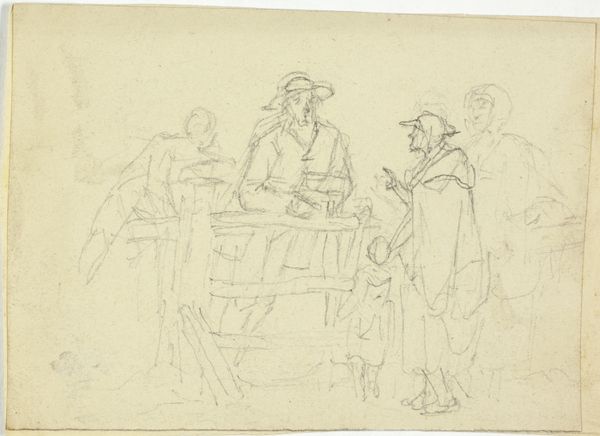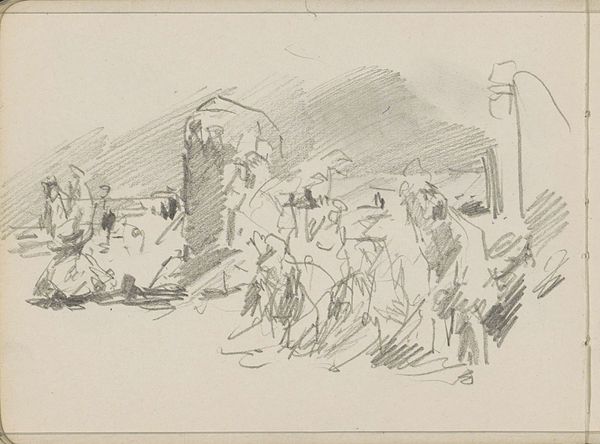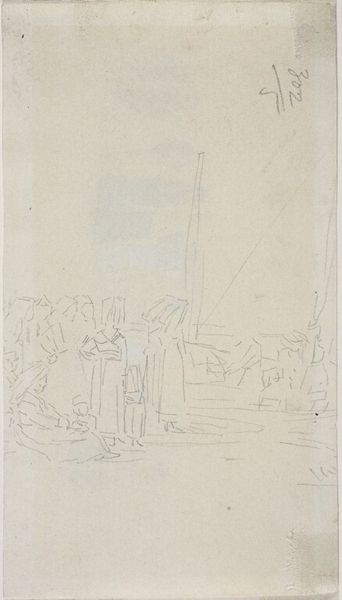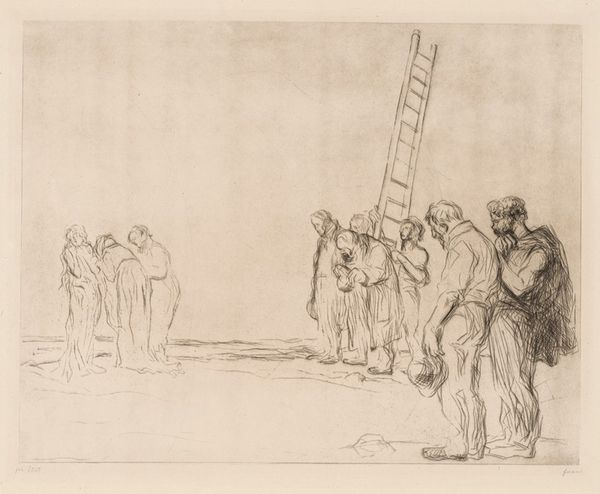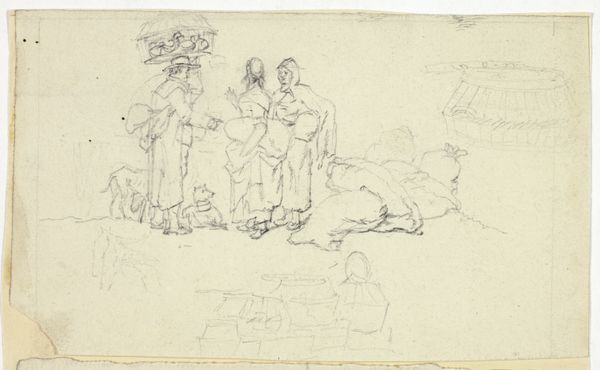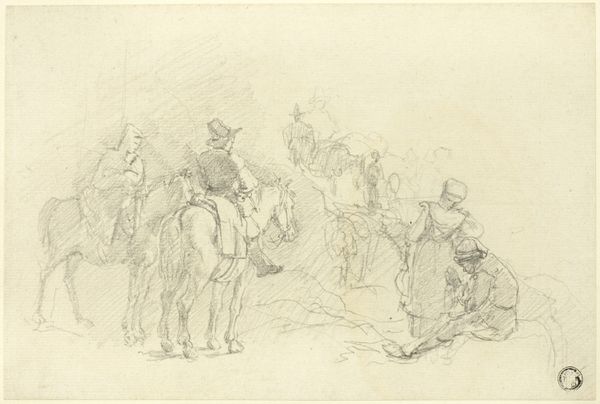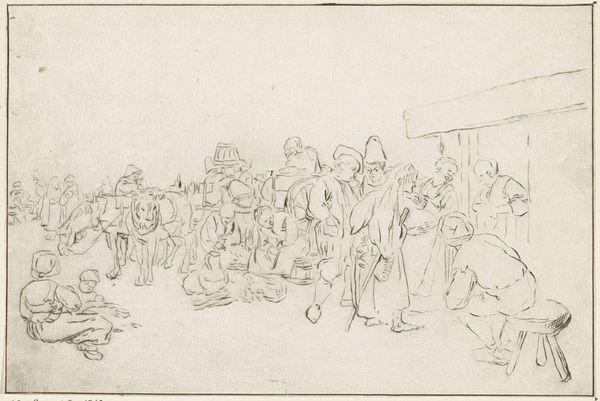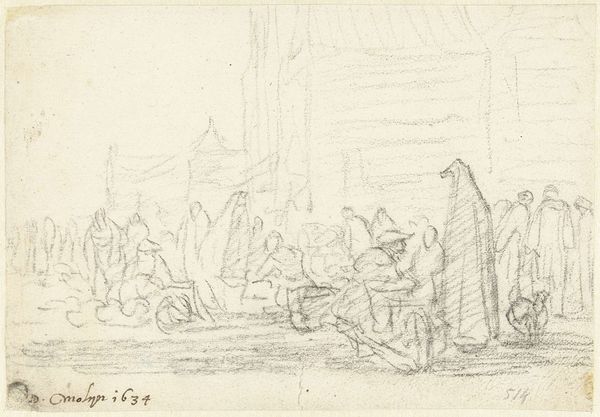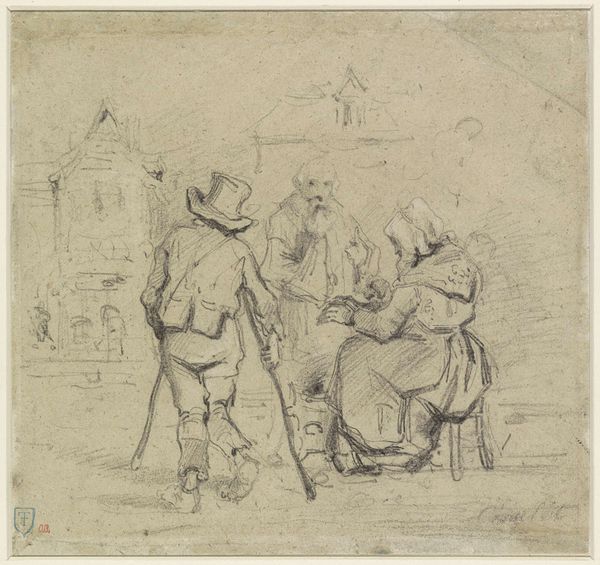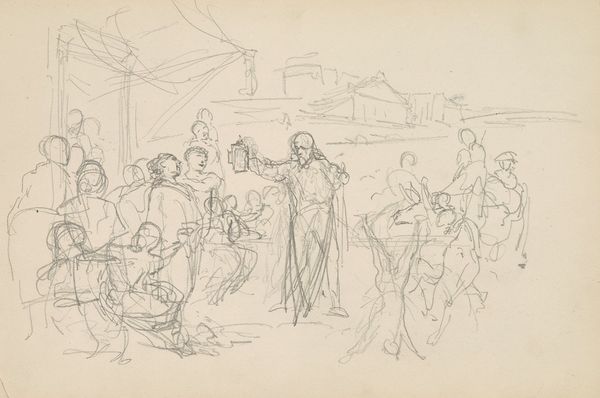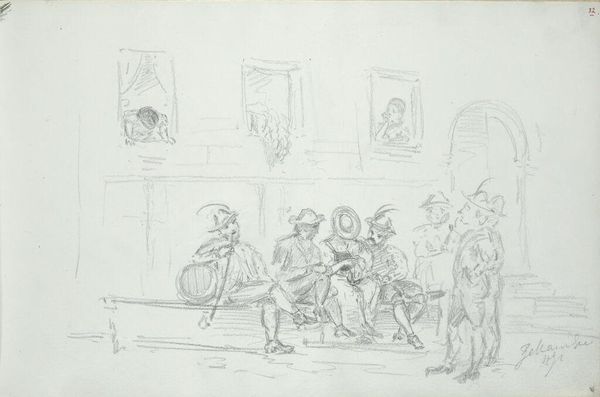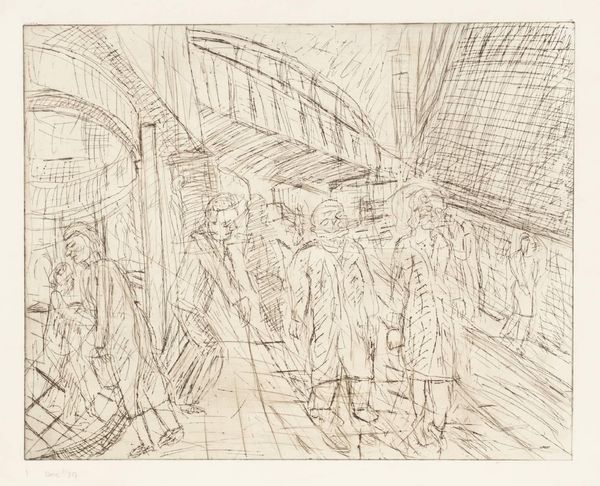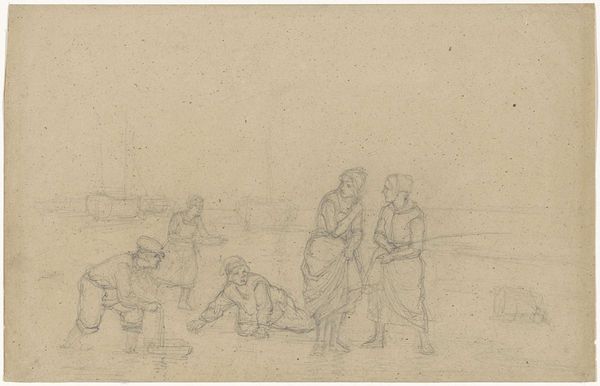
drawing, pencil
#
drawing
#
landscape
#
figuration
#
pencil
#
realism
Dimensions: image: 16.7 x 27.3 cm (6 9/16 x 10 3/4 in.) sheet: 25.1 x 30.8 cm (9 7/8 x 12 1/8 in.)
Copyright: National Gallery of Art: CC0 1.0
Editor: This is "Halt on Festa," a pencil drawing by Robert Austin, likely made sometime after 1921. It strikes me as a rather quiet, almost melancholic scene for what I assume is a festival. There’s a large group of people, but everyone seems still and subdued. What do you see in this piece? Curator: Well, viewing this through a historical lens, I see more than just a subdued festival scene. Consider the timing. Post-World War I Europe was grappling with immense social and economic upheaval. The seemingly simple depiction of rural folk at a "festa" could be interpreted as a reflection of a society clinging to tradition in the face of rapid change. Note the centrality given to religious images on the banners. What is the cultural role of the Catholic Church in this historical moment? Editor: So, you're suggesting that it’s not simply a depiction of a festival, but potentially a statement about societal anxieties or a yearning for stability? It seems more than just a casual drawing. Curator: Exactly. Austin was working within a broader artistic context, wasn't he? Think about the rise of realism and social realism as artistic movements. How might those be at play here? It begs the question – what kind of statement might Austin be trying to make, consciously or unconsciously, about the public role of the "festa" as a potential site of social or even political engagement, perhaps a form of cultural resistance to modern life? Editor: That's a fascinating perspective. I hadn't considered the potential political undertones. I was focused on the quietness of the figures, but now I see how the drawing can also be read as a reflection on tradition, stability, and cultural identity during a time of enormous transition. Curator: Art is rarely just about what is literally depicted, is it? It's so much about the context. Understanding that is really how it gains new readings across time. Editor: Absolutely, I'll definitely remember to consider historical context when I approach an artwork moving forward! Thanks.
Comments
No comments
Be the first to comment and join the conversation on the ultimate creative platform.

